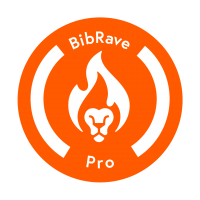A Trail Runner’s Guide To Healthy Eating
Posted on Jul 22, 2011 under Trail | 1 CommentThis is a guest post from Jennifer at Health Training Guide:

Trail running as a sport differs from other forms of running, such as road running and track running. Trail running is distance running that typically takes place along hiking trails, especially single track trails that are not easily accessible by road.
The environment differs for trail runners, too. Hiking trails tend to traverse various terrain: hills, mountains, woods, and deserts. In addition to the physical challenges, there is often a spiritual component to trail running. Trail runners tend to enjoy a sense of freedom in typically serene, forgiving surroundings.
Trail running affects more muscle groups than road running or track running engage, due to the widely varied terrain. Yet, trail runners do not have to deal with the repetition injuries that often result from pounding the pavement on hard roads and running tracks.
Time, distance, stride, and technique are all important considerations for the trail runner. But a runner’s diet is one of the most important considerations of all. Healthy eating is essential for runners of all persuasions. Healthy diets fuel their workouts and build healthier, stronger bodies.
Trail runners are wise to remember a few simple rules for healthy eating. The healthiest diets focus on five areas: unprocessed foods, variety, meal size, protein, and treats.
1. Unprocessed foods are the most nutritious foods for a trail runner. A nutritious diet provides essential nutrients to fuel a runner’s workout and help with post-run recovery. Whole grains, lean meats, heart-healthy fish, and fresh fruits and vegetables are the best food choices.
2. As healthy eating goes, trail runners should not be afraid to mix things up from time to time. While pasta is a diet staple for most runners, other healthy carbohydrates can provide energy while shaking things up a bit. Interesting carb choices include rice, quinoa, and couscous. Because different vegetables and fruits provide different vitamins and minerals, runners should vary their fruit and vegetable choices, too.
3. Meal size is another important consideration for a healthy runner’s diet. Three solid meals a day is not the meal plan for trail runners. Runners require more calories than inactive people, and the best way to get those calories is by eating several small meals a day. Mini meals help trail runners maintain their energy levels and ward off hunger, too.
4. All athletes benefit from protein, and trail runners are no exception. The body uses protein for energy and to repair muscle and tissue damage. Protein is especially important for distance runners. Lean meat, fish, poultry, beans, whole grains, nuts, eggs, and cheese are good sources of protein.
5. Finally, trail runners should not neglect their favorite foods. Eating small portions of the foods they love will keep runners from overindulging. As with anything else, when it comes to eating, moderation is the key.
This guest article was contributed by Jennifer Bell from Health Training Guide. Check out her site to learn more about psychologist training and other exciting health careers.







September 24th, 2011 at 1:08 AM
Nice guest article.
I have not done much trail running (yet, hope to change that in the future) but with long distance you need to pretty much follow the same diet rules.
For me I try and eat a lot of beans so I get good complex carbohydrates and protein.